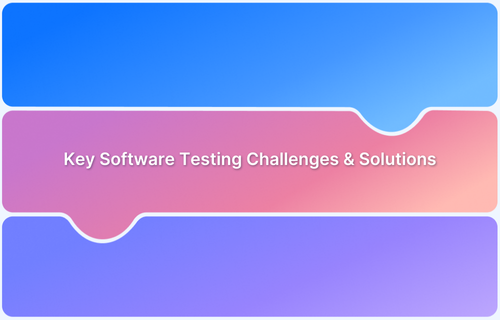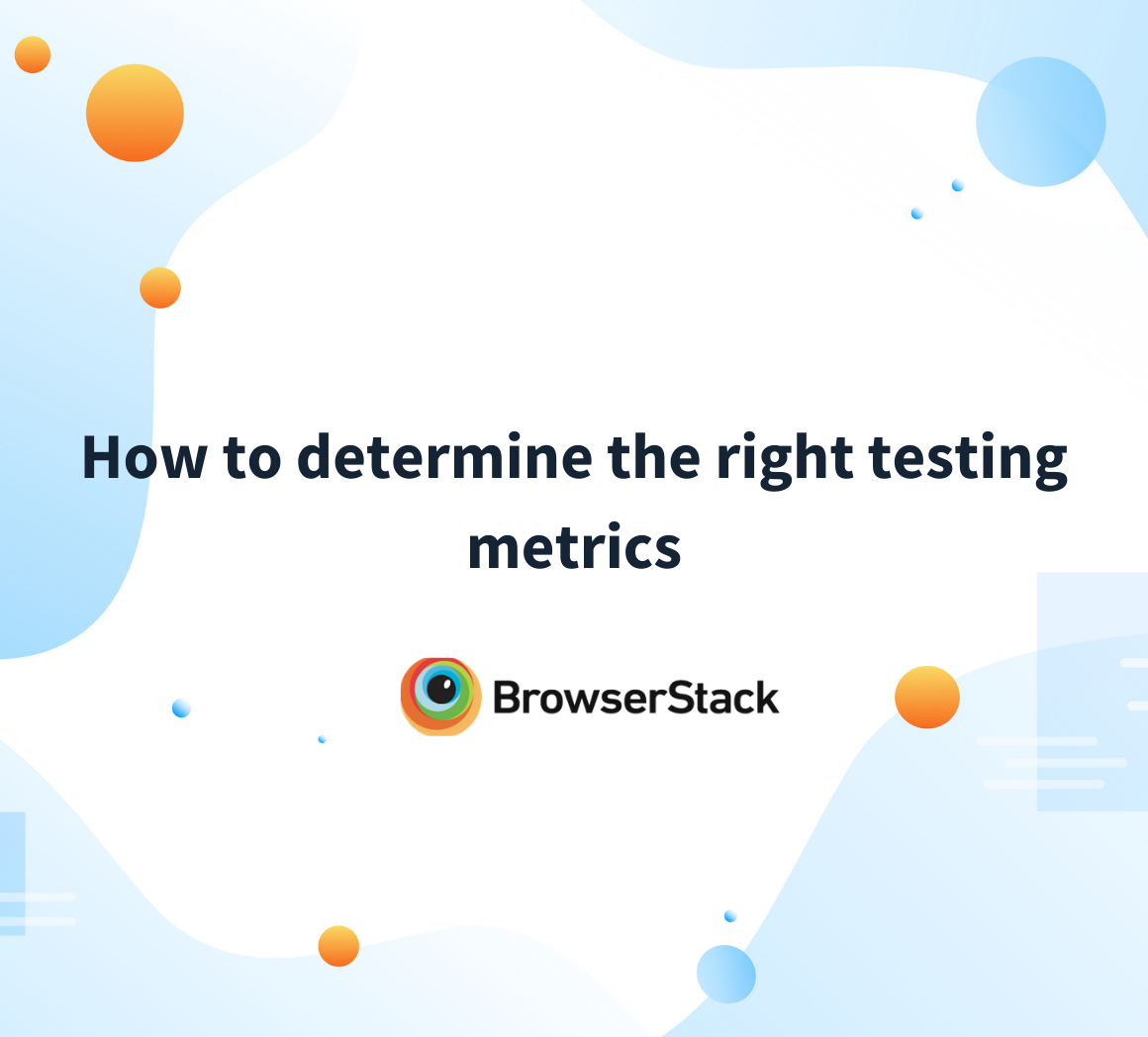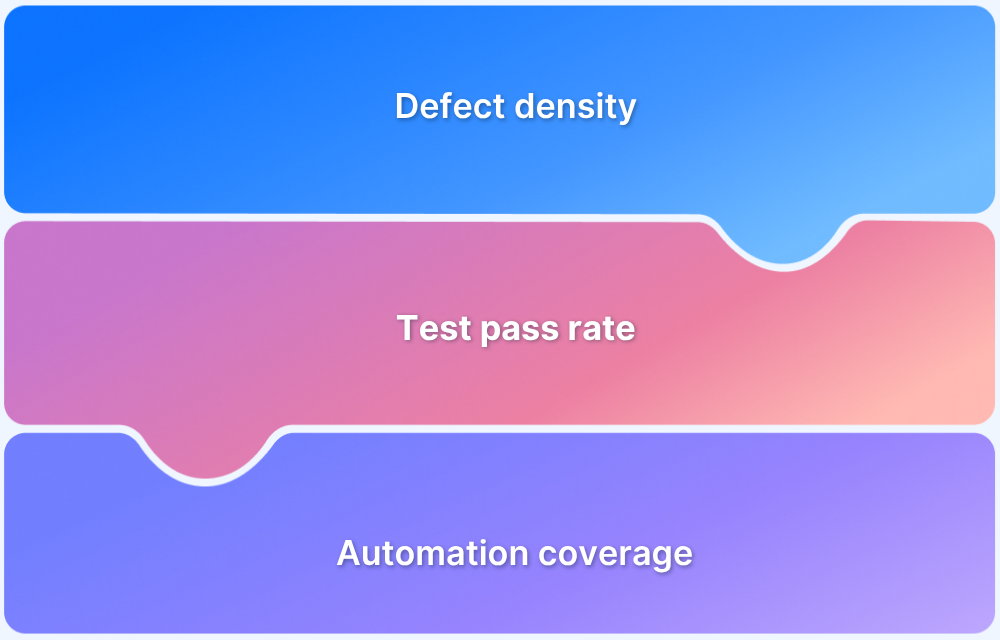Testing ensures that key aspects like functionality, user experience, performance, and visual appeal are optimized for a seamless customer experience.
Test coverage is a critical component of this process, as it helps define the scope of testing and ensures that the right areas are evaluated.
Overview
What are Test Coverage Metrics?
Test coverage metrics are quantitative measures used to evaluate the extent of testing in a software application. They assess various aspects like functionality, user experience, and performance, ensuring comprehensive test coverage beyond just the codebase.
Types of Test Coverage Metrics
- Functional Coverage: Measures the extent to which functional requirements are tested.
- Test Execution Coverage: Tracks the percentage of executed test cases versus total test cases.
- Requirements Coverage: Ensures all business and functional requirements are tested.
- Product Coverage: Tests the product across various devices, platforms, and configurations.
- Risk Coverage: Identifies and mitigates potential risks impacting functionality or performance.
- Statement Coverage: Evaluates the percentage of executable code statements tested.
- Branch Coverage: Assesses coverage of decision points or branches in the code.
- Path Coverage: Measures coverage of all possible execution paths through the code.
- Mutation Coverage: Tests how well the test suite detects changes or errors in the code.
- Integration Coverage: Verifies how well the application integrates with external systems.
- Condition Coverage: Evaluates the testing of different conditions within decision points.
This article explores key test coverage metrics that can help refine your test plans and improve the efficiency of your software testing efforts.
What are Test Coverage Metrics in Software Testing?
Test coverage metrics are quantitative measures used to evaluate the amount of testing a software application has received.
These metrics assess various dimensions of the testing process, helping to determine whether all functional and usability aspects of the software have been adequately covered.
Unlike code coverage, which measures the proportion of the codebase tested, test coverage metrics focus on testing areas such as functionality, user experience, and performance.
Benefits of Test Coverage
Test coverage and measure the metrics drive efficient development, ensuring high-quality releases with minimal risk.
Below are some key benefits:
- Ensures Comprehensive Testing: Test coverage helps ensure all functional and usability aspects of the software are thoroughly tested, reducing the risk of overlooked issues and identifying any testing gaps.
- Improves Test Planning and Optimization: Test coverage metrics provide insights into the effectiveness of test cases, enabling better resource allocation and focusing on high-risk areas for optimized test plans.
- Enhances Software Quality and Reduces Risk: Comprehensive testing leads to fewer bugs, improved functionality, and a smoother user experience while focusing on critical areas reduces the likelihood of failures in production.
- Streamlines Regression Testing: By tracking test coverage metrics, teams can prioritize test cases for regression testing, ensuring that new updates do not break existing functionality.
- Facilitates Continuous Improvement: Regular tracking of coverage metrics helps identify trends, encouraging ongoing enhancements in testing strategies and overall test coverage quality.
- Boosts Confidence in Releases: Clear visibility into testing progress makes stakeholders more confident that the software is ready for release, increasing customer satisfaction and trust.
Types of Test Coverage Metrics
Below are some important test coverage metrics:
1. Functional Coverage
It defines how much coverage the test plan provides for the business and functional requirements. Function coverage is a metric measuring the functions invoked during software testing. The number of functions executed by a test suite is divided by the total number of functions in the software under testing to calculate this metric. It does not assign a value to each function individually, as branch coverage or statement coverage does. Instead, it simply determines whether each function was called by the tests you were running.
2. Test Execution Coverage
It defines what is the percentage of test execution vs the total test case count. It helps understand the amount of test coverage in terms of absolute numbers. This widely helps in understanding the pass or fail rate of the test build.
3. Requirements Coverage
It defines how much of the business requirements suggested by the stakeholders are covered in the existing test plan. Requirements coverage can be deciphered by comparing the number of requirements that are fully covered by the test scenarios vs those partially covered or not covered by the test scenarios.
4. Product Coverage
It defines the scope of the test, in terms of the number of products that the product is tested on. For example, a web application that is tested on various desktops, mobiles, and tablets, covers a large number of devices that the application would be accessed on.
The larger the product coverage, the more it gives confidence for a smoother consistent user experience. Especially, now when the users have access to different types of devices and platforms and companies trying to provide a multi-experience to the users seamlessly across different devices and platforms.
Cross platform compatibility and Cross-Browser Compatibility tests are the biggest examples, where product coverage plays a major role in determining the quality of the software.
5. Risk Coverage
It defines the risk faced by the software application when in real use, which is covered by the tests. These risks are mainly the constraints that may cause any negative impact on the user experience. Once the risks are known, testing can be structured to ensure that potential risks are not translated into actual negative consequences. When tests are designed to cover said risks, the software stands a much higher chance of attaining technical and commercial success.
Take an app for stock market investment, for example. Let’s say it uses a third-party API to search and retrieve financial data – exchange rates, stock prices, etc. If this API becomes unresponsive (a major risk), how would the app respond?
Risk coverage would take this into account and design tests accordingly to ensure the software does not become paralyzed and useless if such a risk occurs.
Read More: What is risk-based testing in agile?
6. Statement Coverage
This is the most basic form of test coverage. It checks how many lines of code were executed during testing. If certain parts of your code weren’t triggered, they could be hiding bugs. The more code you hit during testing, the fewer blind spots you’ll have.
7. Branch Coverage
Branch coverage digs deeper than statement coverage. It ensures every decision point, like if or switch statements, is tested for all possible outcomes. This way, you’re testing whether code runs and how it runs under different conditions.
8. Path Coverage
Path coverage looks at all possible routes through your code. It helps confirm that all logic flows, including loops and nested conditions, work as expected. While full path coverage can be tough on large codebases, it’s great for uncovering edge-case issues.
9. Mutation Coverage
Mutation coverage tests how well your test suite can catch bugs. It makes small changes (mutations) in your code and checks if your tests fail. If they don’t, it means your tests aren’t strict enough. This type of coverage boosts confidence in your test quality.
10. Integration Coverage
This focuses on the interactions between different modules or components in your system. It verifies whether they work smoothly together and helps catch data mismatches, communication issues, or integration logic errors.
11. Condition Coverage
Condition coverage measures whether all possible outcomes of a condition (like true/false in logical expressions) are tested. It ensures each part of a complex decision is checked, not just the final result, leading to more thorough testing.
Test Coverage Metrics in Agile Testing Approach
Software testing coverage metrics help in Agile testing for a variety of reasons.
- First, they help create a risk-based approach to software testing by allowing us to determine which areas of the release are the riskiest and need additional testing.
- Second, they help guide the user experience team and the development team in ensuring that new features have adequate test coverage before they go live to users.
- Third, they help drive down bugs by preventing regression bugs caused by changes to existing code.
When selecting a test coverage metric for your software testing project, your team’s goals must be aligned with the business and user requirements.
Test Coverage Metrics in Real World Examples
When developing a smartphone widget, functionality and user experience are crucial. Code coverage measures technical performance, but combining different test metrics offers a fuller picture of the app’s behavior across devices, scenarios, and user interactions.
This helps identify risks and usability issues early.
The following coverage metrics help ensure a comprehensive evaluation of the app’s performance:
- Statement Coverage: Tests core functions like user input and data display. 90% coverage ensures key features work properly.
- Branch Coverage: Tests different user paths by covering decision points, such as toggling settings and navigating screens.
- Function Coverage: Focuses on critical functions like data processing and connectivity across various devices.
- Path Coverage: Tests complete user flows (e.g., registration, login) to ensure smooth navigation and minimal bugs.
- Mutation Coverage: Modifies code (e.g., connectivity features) to check if tests detect errors after code changes.
- Integration Coverage: Ensures third-party services (e.g., payment gateways, social logins) work correctly and don’t cause data issues.
- Risk Coverage: Tests for potential issues like app crashes, security vulnerabilities, and device compatibility to improve user experience.
- Condition Coverage: Tests conditions like login validation and error handling to ensure proper app behavior across user scenarios.
How to Measure Test Coverage Metrics
Below are the steps that you need to follow to measure test coverage metrics:
- Identify Key Components: Start by identifying the key components of your software that need testing, such as functions, statements, and decision points.
- Measure Statement Coverage: Analyze the percentage of code that is executed during tests. Aim for higher coverage to ensure critical parts of the code are being tested.
- Check Branch Coverage: Ensure all possible outcomes of decision points (like “if” statements) are tested. Create test cases for each condition to guarantee thorough testing.
- Evaluate Function Coverage: Make sure all the functions in your application are tested under various conditions. This ensures that every functional unit is working as intended.
- Assess Path Coverage: Identify and test all possible execution paths through the application. This helps you uncover logical errors and ensure all user scenarios are accounted for.
- Run Mutation Tests: Introduce small changes to the code (mutations) and check if your tests can detect them. If your tests catch these mutations, the coverage is effective.
- Verify Integration Coverage: Test interactions between key components or external systems (e.g., payment systems, APIs). This ensures that the integration points work seamlessly.
- Check Risk Coverage: Focus on testing for potential security vulnerabilities, performance bottlenecks, and compatibility issues across devices and platforms.
- Assess Condition Coverage: Test different combinations of conditions in decision statements to ensure all possible logic paths are evaluated and errors are detected.
Getting Maximum Coverage with BrowserStack
Without proper test coverage, your business risks significant revenue loss and customer churn from downtime and security vulnerabilities.
Here’s why BrowserStack’s test coverage can enhance your app’s quality with different metrics:
- Testing under Real User Conditions: BrowserStack offers real devices and browsers, allowing tests under authentic conditions like Network Simulation, Push Notifications, and Geo-Location Testing. This helps identify issues that simulators can’t replicate.
- Covering Real Mobile Devices and Browsers: Due to device fragmentation, mobile app testing is crucial. BrowserStack provides access to over 3,500 real devices and browsers, eliminating the need for a costly physical device lab.
- Fast and Reliable Testing: Tests are run on actual hardware, offering full access to native functionalities. BrowserStack integrates with popular automation frameworks like Selenium and Appium, enabling faster and more efficient testing at scale.
Must Read: How to ensure Maximum Test Coverage?
Optimize Test Coverage with BrowserStack Quality Engineering Intelligence (QEI)
Achieving reliable software quality starts with understanding test coverage across your pipeline. BrowserStack QEI gives QA leaders a unified dashboard to monitor coverage, identify gaps, and make informed decisions that boost release confidence.
Here are the key features of BrowserStack QEI:
- Automatically tracks test coverage across browsers, devices, features, and releases.
- Unifies data from test management, CI/CD, automation, and issue tracking tools
- Identifies gaps and redundancies in test coverage to reduce defect leakage
- Monitors how coverage impacts release velocity, stability, and quality
- Enables custom dashboards to track project-specific coverage metrics
- Helps QA leaders make data-driven decisions to optimize test investments
- Simplifies stakeholder reporting with clear, real-time coverage insights
Best Practices for Test Coverage Metrics
Here are some best practices that will help you ensure more accurate test coverage and faster issue detection:
- Define Clear Testing Goals: Align testing objectives with project requirements and software complexity to ensure focused and relevant coverage.
- Prioritize Key Features: Focus on critical functions and high-usage features directly impacting user experience and system stability.
- Choose Relevant Metrics: Based on the software’s needs and testing goals, select coverage metrics like statement, branch, and path coverage.
- Set Coverage Targets: Establish targets based on project standards or quality benchmarks to track progress and identify gaps.
- Adopt a Multi-Metric Approach: Combine coverage metrics to create a holistic view of test completeness and uncover potential gaps.
- Use Coverage Tools: Leverage test coverage tools to visualize coverage data, identify weaknesses, and guide test improvements.
- Implement a Feedback Loop: Continuously analyze coverage results to refine test plans, prioritize critical tests, and focus on high-risk areas.
- Foster Collaboration: Ensure ongoing communication among developers, testers, and project managers to align efforts and effectively address coverage gaps.
Conclusion
Effective test coverage is crucial for avoiding costly issues such as downtime, security breaches, and customer dissatisfaction. BrowserStack offers a comprehensive solution by enabling real-world testing across various devices and browsers, ensuring maximum coverage and reliability.
With its real device cloud and fast testing capabilities, businesses can enhance product quality and deliver seamless user experiences while optimizing resources and costs.






